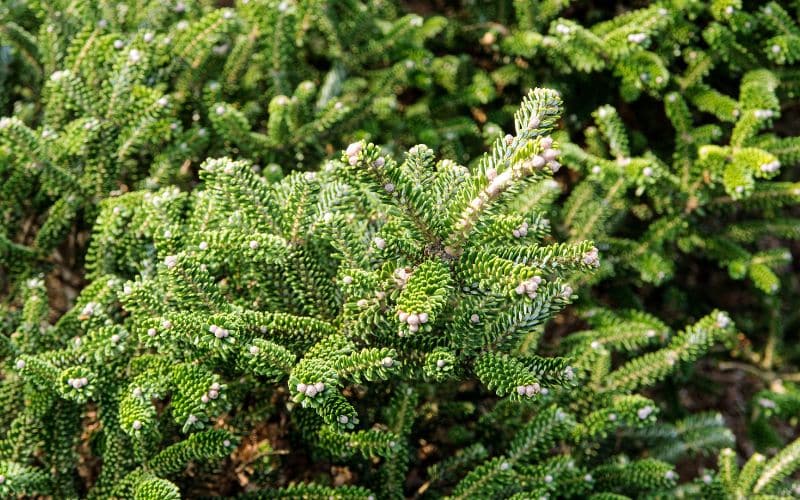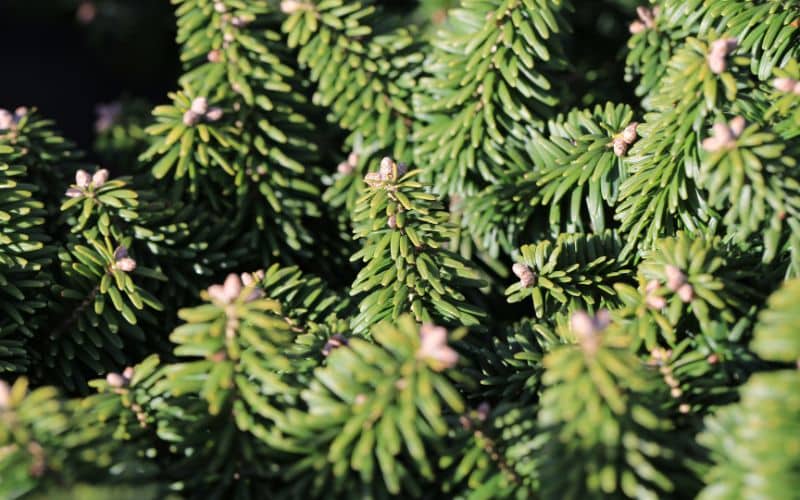
Why Balsam Fir Trees Are More Than Just Holiday Decor
The Balsam Fir, or should we say, the illustrious Abies balsamea! Sure, it’s the belle of the ball come December, twinkling with lights and ornaments. But confining its role to just a Christmas tree is like calling Wayne Gretzky just a hockey player. This native gem is a year-round marvel that graces the diverse forests of Ontario, offering far more than a seasonal spectacle. From its aromatic needles to its versatile wood, the Balsam Fir is a tree for all seasons, deserving of a spotlight that shines well beyond the holiday period.
What Makes Abies Balsamea Unique Among Fir Trees?
Balsam Fir, a tree that’s as Canadian as a Tim Hortons double-double on a frosty morning. But what makes it so special? First off, let’s talk about its adaptability. This tree is like the Swiss Army knife of the forest. It can grow in a variety of soils and climates, making it a true Ontarian at heart. But its resilience doesn’t stop there. The Balsam Fir has a unique defense mechanism: its needles. These aren’t just any needles; they’re dark, shiny green needles with two white bands underneath. These bands help the tree to photosynthesize even in low light conditions, making it a master of survival in the harsh Canadian winters. And let’s not forget its aromatic scent, which has made it a staple in the world of essential oils and aromatherapy.
How Does the Balsam Fir Tree Look Like?
Imagine standing in an Ontario forest, surrounded by a sea of green. Your eyes catch a towering figure reaching heights of up to 30 meters. That’s the Balsam Fir for you, a tree that stands tall and proud among its peers. Its needles are not just green; they’re a dark, lustrous green that seems to capture the very essence of the forest. These needles are 2 to 4 centimetres long and are the tree’s crowning glory. But there’s more to this tree than meets the eye. Its bark is a textured grey, punctuated by sap blisters filled with resin. This resin has been used for centuries in traditional medicine and even as a fire starter. The branches of the Balsam Fir are robust and well-spaced, providing a sturdy platform for its compact cones, which are a vital part of the tree’s reproductive system.
The Needle Know-How: What Sets Balsam Fir Needles Apart?
Needles are the Balsam Fir’s pièce de résistance. They’re not just green; they’re dark and shiny with two white bands underneath. These needles are more than just eye candy; they’re a lifeline for the tree, helping it grow and thrive in various habitats.
Bark and Bud: The Outer Beauty of Balsam Fir
The bark of the Balsam Fir is an intriguing feature. It’s greyish in color and covered in sap blisters. When these blisters are punctured, they release a resin that has various uses, from medicinal to industrial. The buds, on the other hand, range from red and purple to bluish-green, adding a pop of color to the tree’s overall aesthetic.

Cones and Seeds: What’s the Deal?
If trees had dating apps, cones would be their profile pictures. For the Balsam Fir, cones are more than just eye-catching ornaments; they’re the tree’s reproductive powerhouses. Originating from flowers, these compact cones are the primary seed factories. Each cone is like a miniature treasure chest, housing seeds that are ready to venture out into the world. But these seeds aren’t just future Balsam Firs waiting to happen; they’re also a buffet for wildlife. From birds to small rodents, many animals rely on these seeds for nourishment. So, the next time you see a cone, remember it’s not just a pretty face; it’s a vital cog in the circle of life that keeps our forests vibrant and diverse.
Where Does the Balsam Fir Grow? Understanding Its Habitat
Ontario is more than just the home of the Maple Leafs and butter tarts; it’s also a paradise for Balsam Firs. These trees are the chameleons of the plant world, adapting to a variety of climates and soil types. From the sun-drenched clearings to the shady understories, Balsam Firs are happy to grow wherever they can sink their roots. And speaking of roots, while they may not go too deep, they’re strong enough to anchor the tree in both moist and dry soils. Whether you’re in the eastern woodlands or the western plains of Ontario, you’re likely to encounter this versatile tree. It’s as much a part of the Ontario landscape as the Great Lakes, making it a true provincial icon.

How to Grow Your Own Balsam Fir Tree in Ontario
Thinking of adding a touch of forest charm to your backyard? Growing a Balsam Fir is easier than you might think. These hardy trees are like the friendly neighbors of the plant world; they’re not fussy about where they live. Whether your soil is sandy, loamy, or somewhere in between, a Balsam Fir will likely thrive. But here’s a pro tip: because their roots aren’t deep divers, it’s best to plant them in a spot shielded from strong winds. You don’t need a full-grown tree to start; even a single twig can be the genesis of a majestic Balsam Fir that will one day tower over your garden, offering shade and beauty for years to come.
Wood You Believe It? Commercial Uses of Balsam Fir
If the Balsam Fir had a LinkedIn profile, it would be flooded with endorsements. This tree is a jack-of-all-trades in the commercial world. Its wood is a go-to material for pulp, making it a cornerstone in the paper industry. But it doesn’t stop there; its wood is also sturdy enough for plywood, making it a staple in construction projects. And let’s not overlook its aromatic needles. These fragrant little wonders have carved out a niche in the booming aromatherapy market. From construction to relaxation, the Balsam Fir is a tree that contributes to various sectors, proving it’s not just another pretty face in the forest.

The Ministry of Natural Resources and Balsam Fir Conservation
When it comes to the Balsam Fir, the Ministry of Natural Resources isn’t just sitting on the sidelines; they’re leading the charge in conservation efforts. Think of them as the guardians of this arboreal treasure. Through a range of targeted programs, they’re working to ensure that this native species doesn’t just survive but thrives in Ontario’s diverse ecosystems. From reforestation initiatives to monitoring the health of existing Balsam Fir populations, the Ministry is committed to safeguarding this tree for future generations. Their work serves as a blueprint for how to balance ecological preservation with sustainable development, making sure the Balsam Fir remains a vital part of Ontario’s natural heritage.
Conclusion: Why Balsam Fir is Ontario’s Tree to Watch
So there you have it, folks! The Balsam Fir is more than just a Christmas tree. It’s a symbol of resilience, beauty, and versatility. From its unique needles to its valuable wood, it’s a tree that deserves our attention and care. Next time you’re out for a walk in the forest, take a moment to appreciate the Balsam Firs around you. They’re not just part of the scenery; they’re an integral part of Canada’s natural heritage.
And who knows? Maybe this Christmas, as you decorate your Balsam Fir, you’ll see it in a whole new light.








